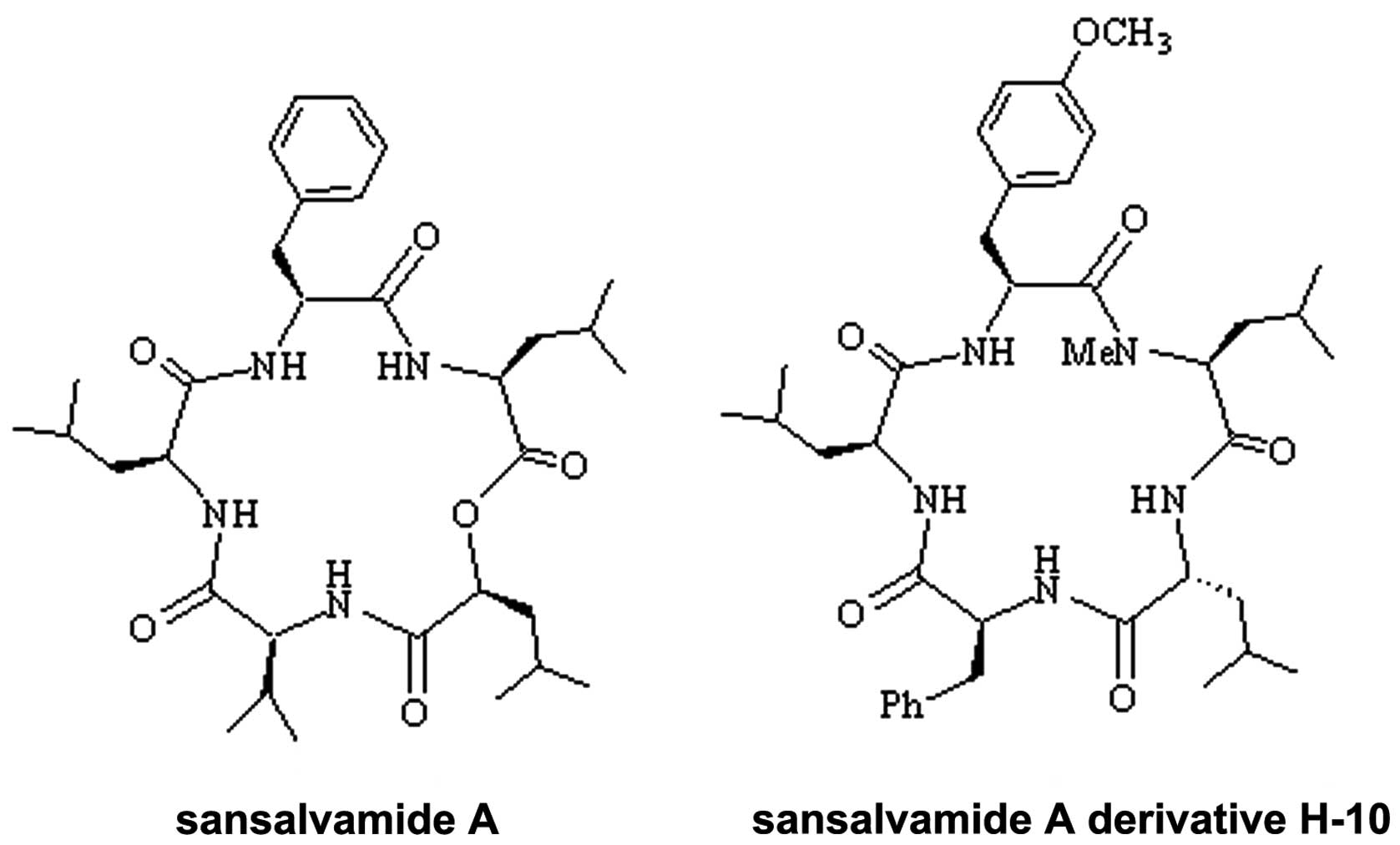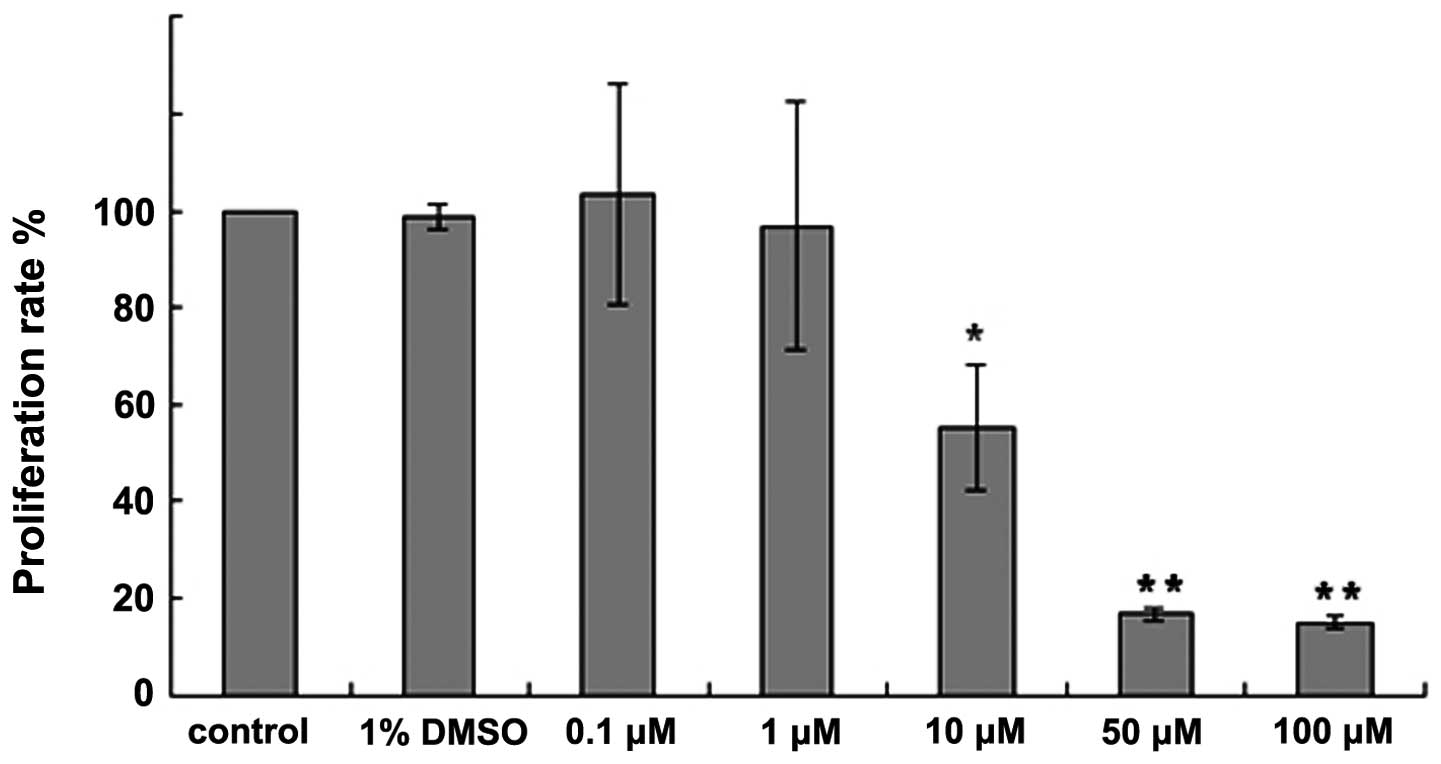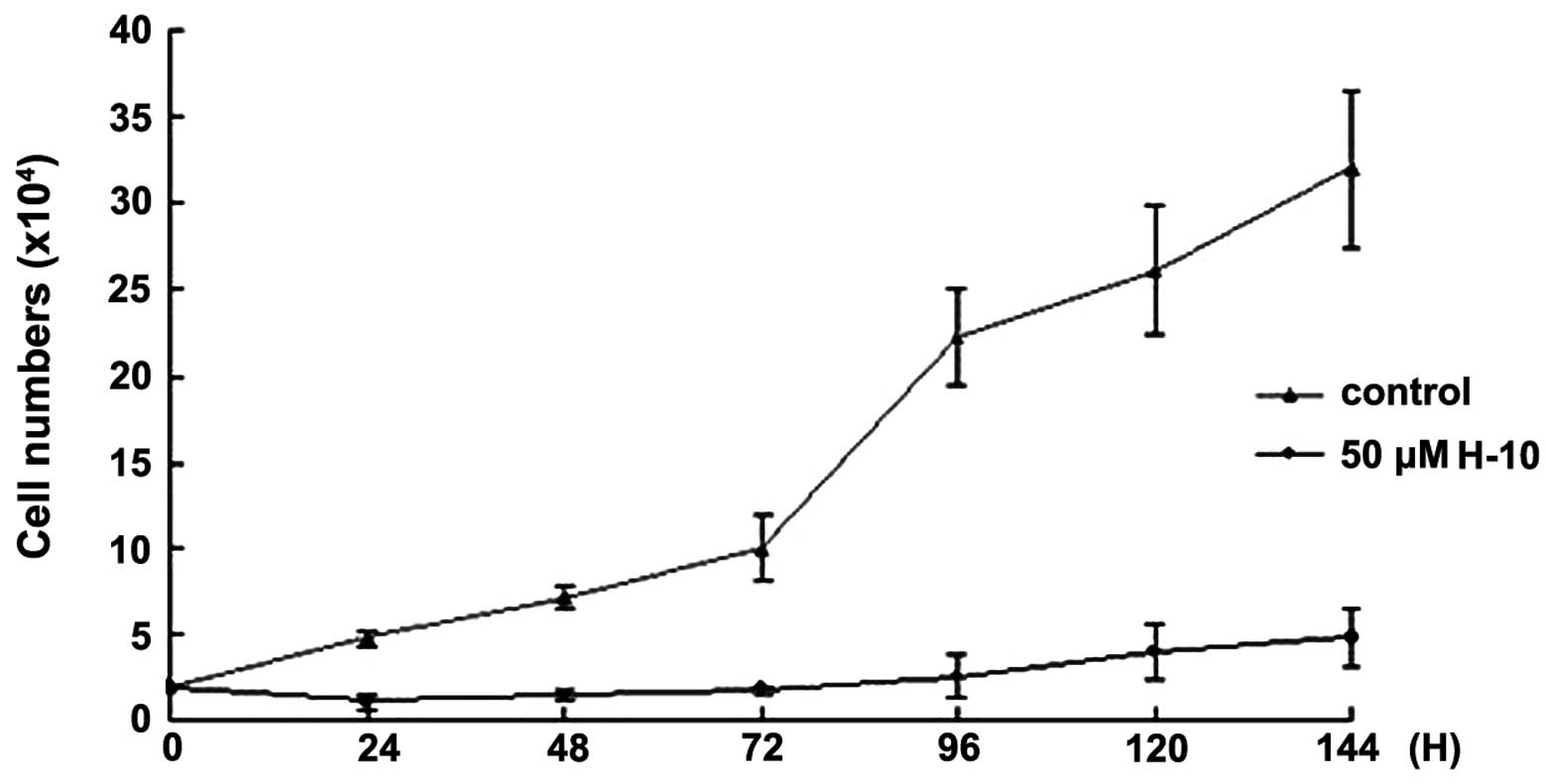A novel cyclic pentapeptide, H‑10, inhibits B16 cancer cell growth and induces cell apoptosis
- Authors:
- Published online on: May 8, 2014 https://doi.org/10.3892/ol.2014.2121
- Pages: 248-252
Metrics:
Total
Views: 0 (Spandidos Publications: | PMC Statistics:
)
Total PDF Downloads: 0 (Spandidos Publications: | PMC Statistics:
)
Abstract
Sansalvamide A, a cyclic depsipeptide isolated from a marine fungus of the Fusarium genus, exhibits significant antitumor activity. In the present study, H‑10 (molecular formula, C38H55N5O6; molecular weight, 677.8732), a novel sansalvamide A derivative, demonstrated an inhibitory effect on the proliferation of murine melanoma B16 cells. It was confirmed that H‑10 induced the apoptosis of the B16 cells. The inhibitory rate of various concentrations of H‑10 on the B16 cells was measured by sulforhodamine B colorimetric assay, and the results revealed that the inhibitory effect of H‑10 on the B16 cells occurred in a concentration‑dependent manner. In addition, a growth curve model of the B16 cells treated with 50 µM H‑10 revealed that the effect of H‑10 also occurred in a time‑dependent manner. The apoptotic morphology of the B16 cells was observed using an optical microscope. Following the treatment of the cells with 50 µM H‑10 for 24 h, the cell apoptosis rate was analyzed using flow cytometry. The expression levels of caspase‑3, ‑8 and ‑9 were analyzed by western blot analysis, and the results indicated that H‑10 may induce the apoptosis of B16 cells.
















